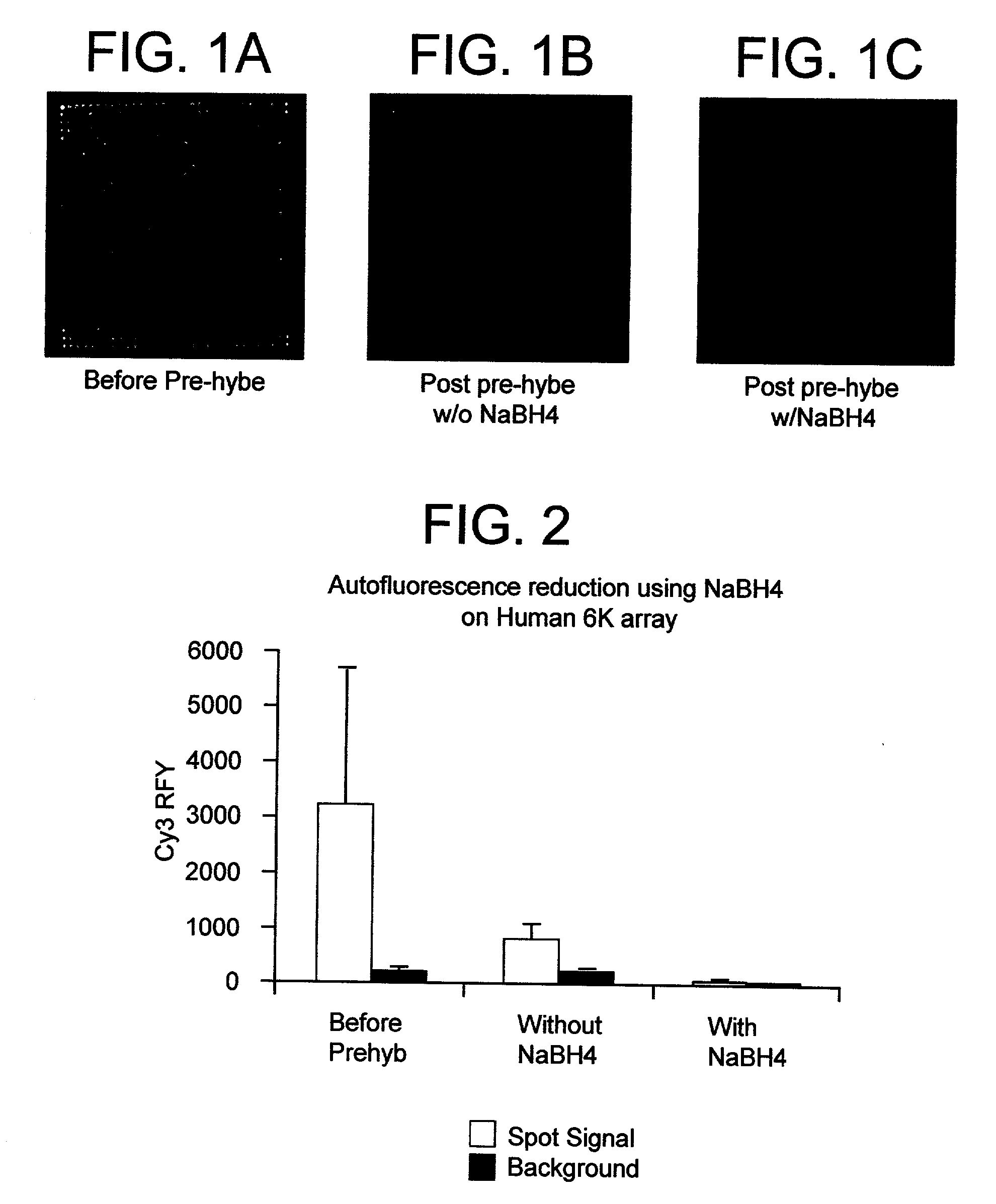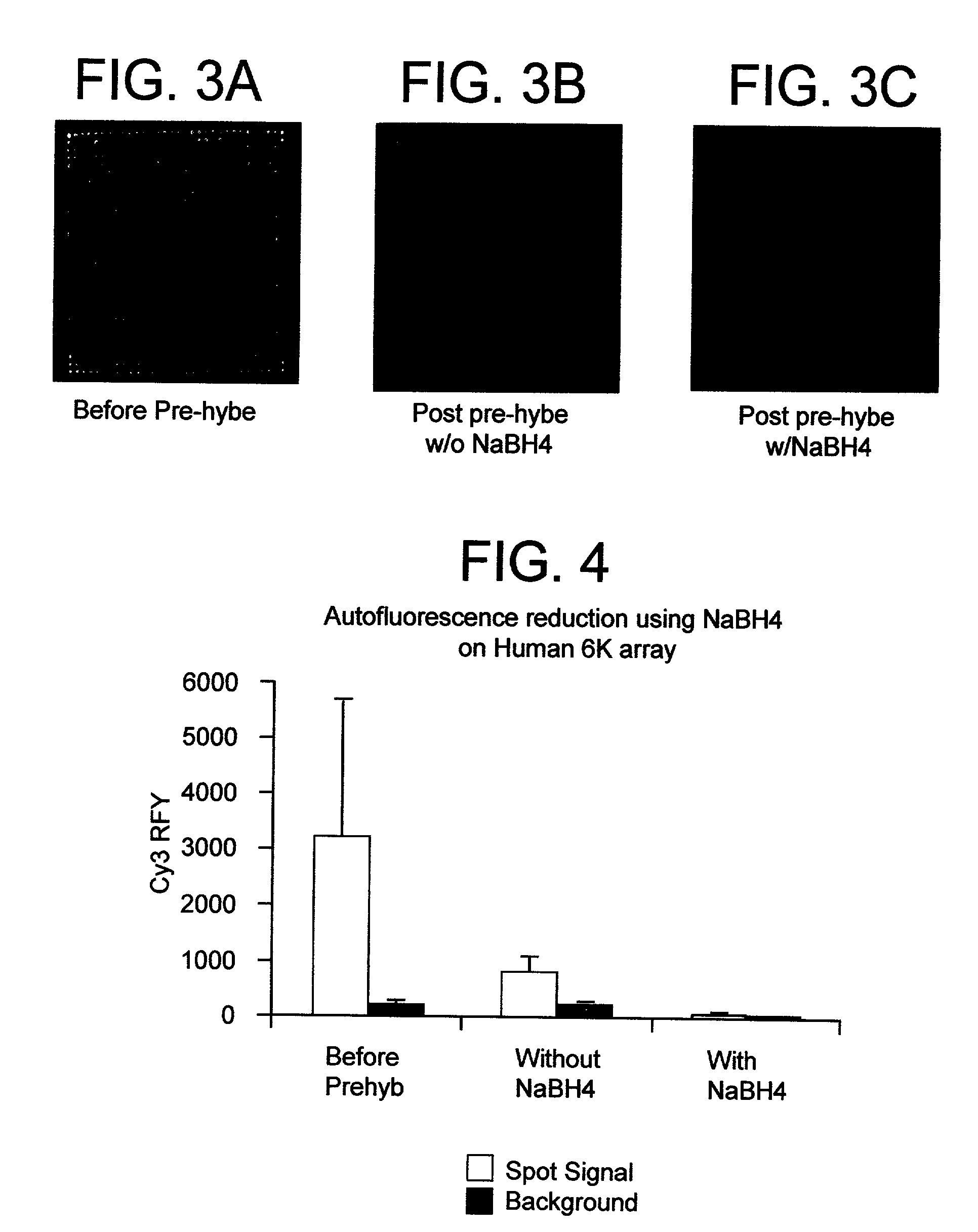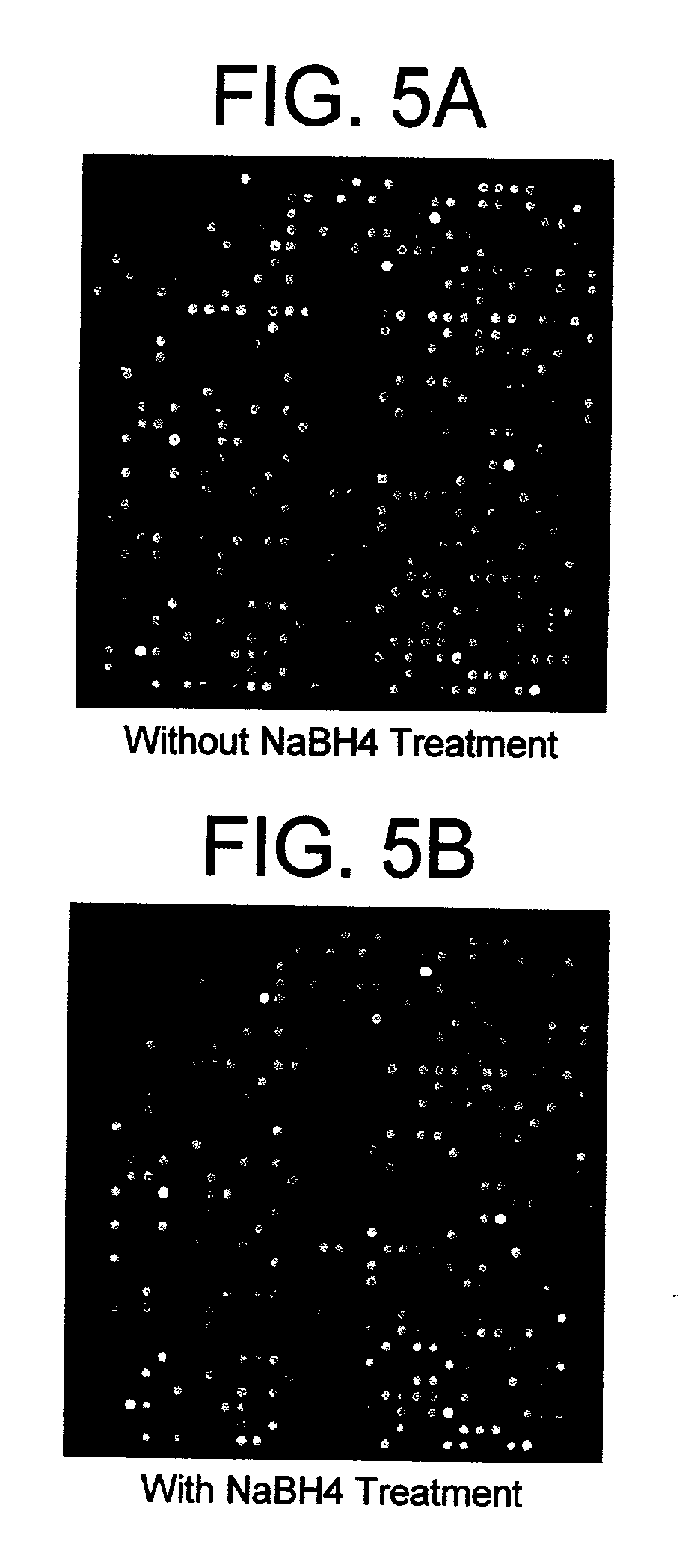Treatment of substrates for immobilizing biomolecules
- Summary
- Abstract
- Description
- Claims
- Application Information
AI Technical Summary
Benefits of technology
Problems solved by technology
Method used
Image
Examples
example 1
[0082] FIGS. 1A-1C show representative Cy3 images of a 1000 gene sub-grid of a microarrays of 2000 cDNA human DNA clones printed on CMT GAPS.TM. slides before and after treatment with 0.25% sodium borohydride, under a PMT setting of 950 volts. Referring to FIG. 1A which is an image of a slide before washing with any solution, both positive and negative spots are observed, indicating that the target quality is inconsistent since the spot fluorescent intensity either higher or lower than the background intensity on the GAPS surface. Analysis of the images showed that the normal prewash couldn't get rid of autofluorescence on both spots and the surface. FIG. 1B shows an image of a slide washed according to the procedures described above without sodium borohydride. Analysis of the images in FIG. 2B showed that the prewash without reducing agent could not reduce autofluorescence on both spots and the surface. FIG. 1C shows an image of a slide treated according to the procedures above wit...
example 2
[0083] FIGS. 3A-C show representative Cy3 images of a 1000 gene sub-grid of an array of microarrays of 6000 cDNA human DNA clones printed on a CMT GAPS slides before and after treatment with 0.25% sodium borohydride, under a PMT setting of 800 volts. FIG. 3A is an image of an untreated slide. FIG. 3B is an image of a slide washed without treatment with reducing agent. FIG. 3C is an image of a slide washed and treated with sodium borohydride. FIG. 4 is a bar graph comparing the Cy3 RFU readings for the untreated slide, the slide washed without reducing agent and the slide treated with sodium borohydride. As shown in FIGS. 3A-C and FIG. 4, treatment significantly reduces auto-fluorescence on the microarray. Analysis of the image in FIG. 2B shows that even though a conventional pre-wash can remove autofluorescence on target spots partially, it can not remove autofluorescence on the surface at all. However, as can be seen from FIG. 2C, when treated with reducing agent, the autofluoresce...
example 3
[0084] To test if reducing agent treatment affects the target hybridization, self-self hybridization of microarrays of 6000 cDNA human DNA cancer clones printed on a CMT GAPS.TM. slides (treated and untreated with sodium borohydride) with 0.25 .mu.g of total human brain RNA through linear amplification and reverse transcription labeling was also performed. FIG. 5A is an image a slide washed without reducing agent, and FIG. 5B is an image of a slide washed and treated with sodium borohydride according to the procedures described above. FIG. 6A is a graph of net Cy3 RFU versus net Cy5 RFU for the slide without sodium borohydride treatment and FIG. 6B is a graph of net Cy3 RFU versus net Cy5 RFU for the slide with sodium borohydride treatment. FIG. 6A shows more genes have higher Cy3 / Cy5 between 100-1000 on the untreated slides due to the Cy3 autofluorescence, when compared with the graph in FIG. 6B. This suggests that without sodium borohydride treatment, the Cy3 auto-fluorescence sig...
PUM
| Property | Measurement | Unit |
|---|---|---|
| Fraction | aaaaa | aaaaa |
| Fraction | aaaaa | aaaaa |
| Fraction | aaaaa | aaaaa |
Abstract
Description
Claims
Application Information
 Login to View More
Login to View More - Generate Ideas
- Intellectual Property
- Life Sciences
- Materials
- Tech Scout
- Unparalleled Data Quality
- Higher Quality Content
- 60% Fewer Hallucinations
Browse by: Latest US Patents, China's latest patents, Technical Efficacy Thesaurus, Application Domain, Technology Topic, Popular Technical Reports.
© 2025 PatSnap. All rights reserved.Legal|Privacy policy|Modern Slavery Act Transparency Statement|Sitemap|About US| Contact US: help@patsnap.com



